Here's the biggest takeaways as Clay Township moves ahead with algae-based wastewater plant
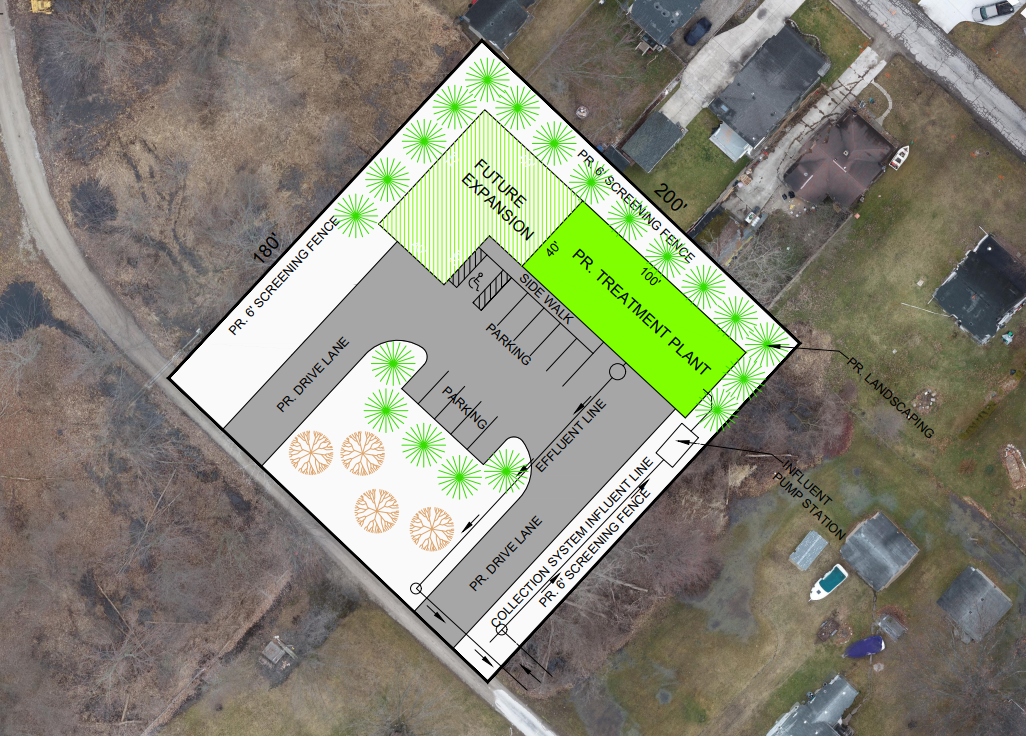
It may be a couple of years before the new wastewater treatment plant proposed for the Sans Souci area of Harsens Island comes online — and one run on new algae-based technology — but Clay Township officials are laying the groundwork now to bring the idea to fruition.
“We’re going before EGLE Tuesday for a pre-application meeting to tell them what we want to do and everything else,” Clay Supervisor Artie Bryson told attendees of a town hall Thursday, referring to the Michigan Department of Environment, Great Lakes, and Energy.
“We really can't do a whole lot until we get the EGLE permit. We’ve got to try to expedite that as soon as we can, and once we get that, we can start prepping the property.”
The township formally unveiled plans for the wastewater facility earlier this summer in connection to a $2 million line item in the next state budget to help build it and bring in an initial phase of island users, citing a need to get property owners off septic fields.
On Monday, Bryson is slated to ask the township board for approval to execute a purchase agreement of three lots at the end of Maple Street where the island plant would go and around the corner from the Sans Souci business district expected to benefit from the new plant long South Channel Drive.
According to a note to the board, the buy would be for $1 and revert back to its owner if the plant does not come to fruition.
Close to 100 islanders and other officials gathered at the Harsens Island Lions Club to learn more about the process on Thursday night.
Dan Johnson, chief technology officer for OneWater, the company behind the Algaewheel infrastructure planned for the new facility, broke down the wastewater treatment process it uses, while John Monte, of Project Control Engineering, addressed the design and site process for the building itself.
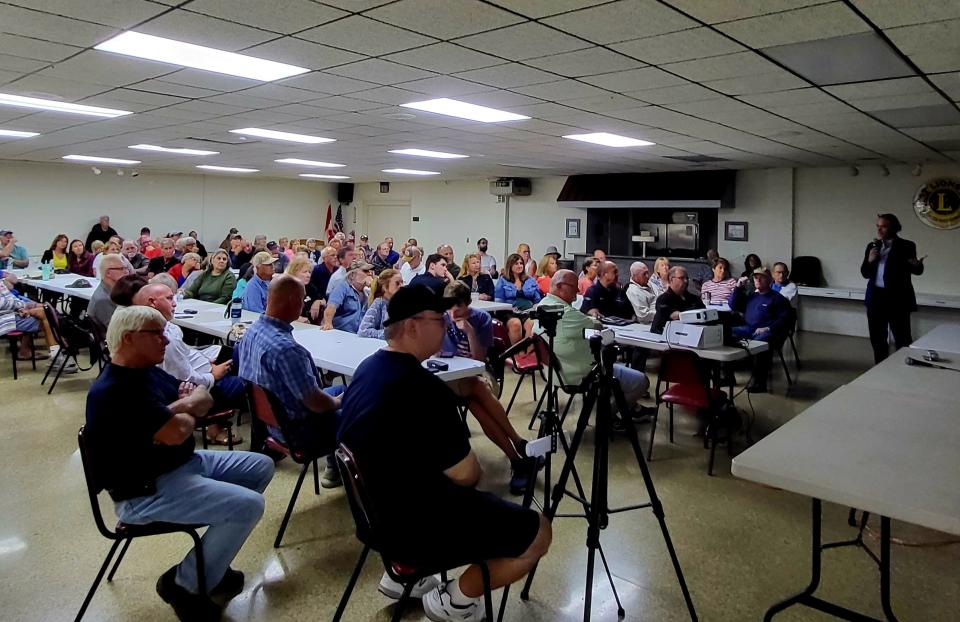
What are the major features of the plan again?
Officials said Thursday that the algae plant could incorporate roughly 120 residences in addition to Sans Souci businesses.
Previously, Bryson said they’d roll out setting a district for the wastewater system, allowing property owners to participate and pay for the service at will.
Based on the capacity of 25,000 gallons a day expected, as well as past Algaewheel plants of a similar operation, the supervisor told islanders it’d be roughly “35 to 45 bucks a month.”
Property owners would be responsible to bring the hookup from their home to the road, once installed, officials, though the group wagered it’d cost far less in the long run than the periodic $400 to $500 it’d cost hauling sewage away.
Much of the time Thursday, Johnson spoke of the tech itself.
According to the company’s website, the algae tech is a nature-based solution designed to emit a net zero carbon emission in wastewater treatment, consuming up to 90% less energy than more traditional systems.
Images of the system show large greenhouse-like structures with rows of rotating cylindrical wheels where the algae grow with light, carbon dioxide, and nutrient exposure, allowing algal biofilms to target byproducts in wastewater sludge.
On Thursday, Johnson said it’d require minimal manhours of oversight, come with a digital system to alert local officials of any errors when unmanned, leave little to no odor impact when operating right, and be able to address and naturally breakdown most more chemically-based materials that wind up in wastewater systems.
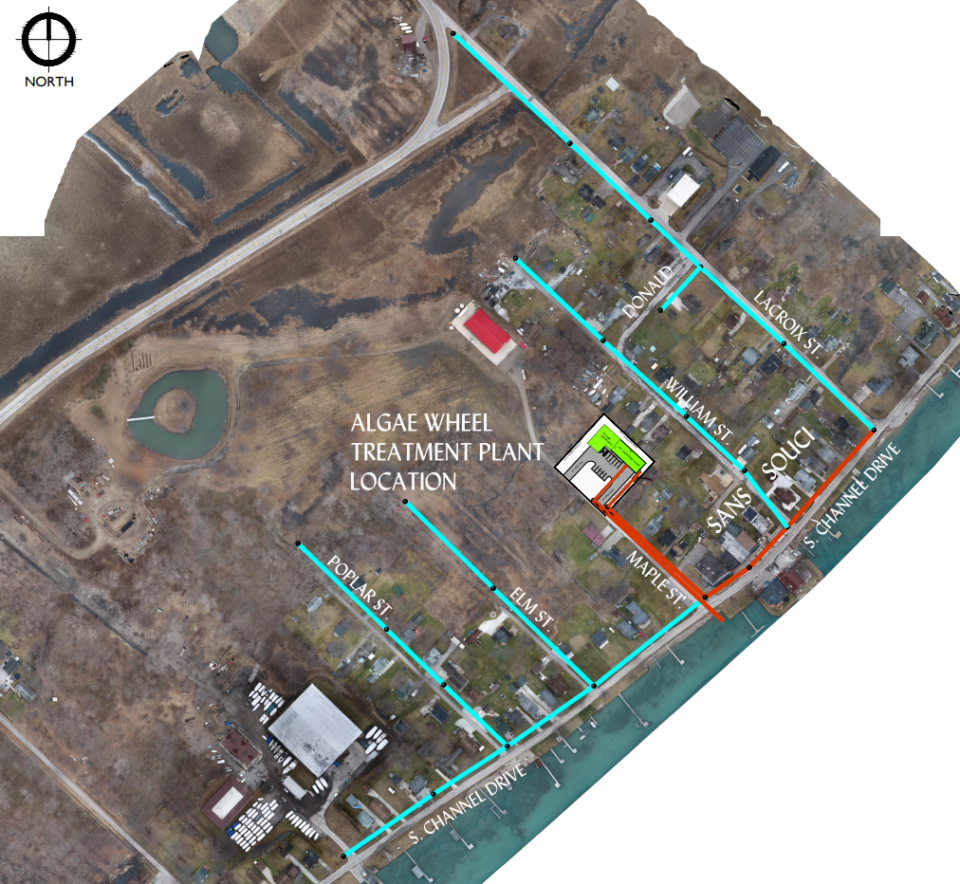
What will they have to address with EGLE?
Officials admitted there could be challenges in permitting the process for the first time in Michigan.
When asked if there was a back-up plan, Johnson said he was already in contact with EGLE and expressed some confidence in relaying the success of the technology.
“As my grandpa would say, 'it’s not my first rodeo.' I did the first one in Illinois, first one in Indiana, first one in Missouri, first one in Iowa, first one in New York, and I’ve kind of gotten used to that process,” he said. “It is a process. Regulators aren’t mean people, they’re just cautious people. They just want to make sure it’s going to work and not get into an environmental problem.”
But Johnson admitted he couldn’t speak for the site selection.
Monte said they’re going to have to contend with wetlands on the property but hoped the larger environmental benefit lauded with a nature-based treatment process would help mitigate the issue.
EGLE officials have said there are additional steps the state would use to evaluate a new technology, though the process to permit a facility would be based on existing rules.
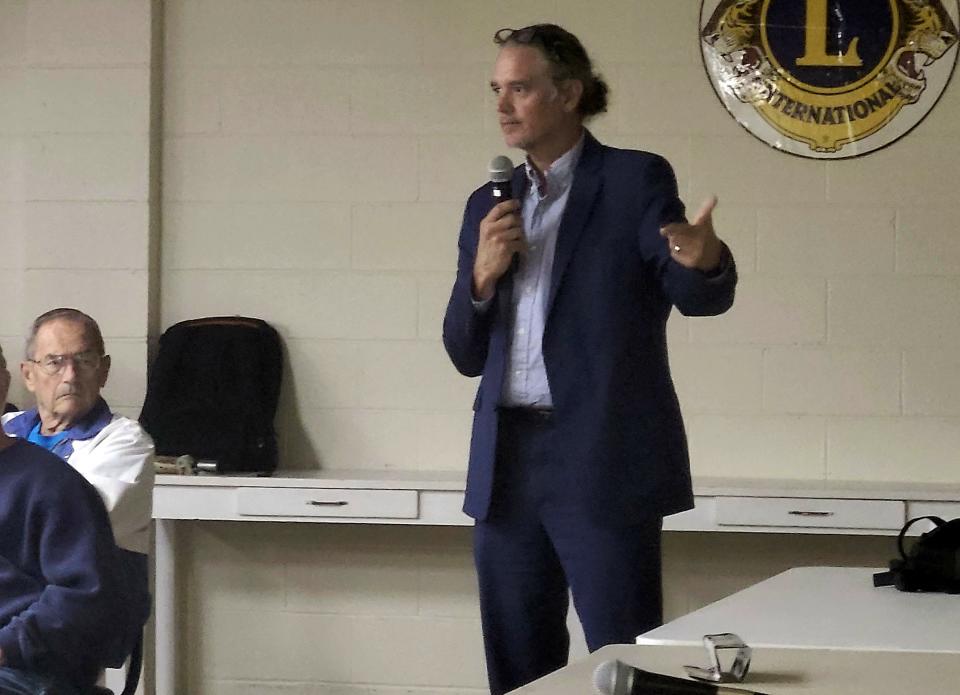
If successful with EGLE, then what?
Other next steps, Monte said, were performing soil borings on the site.
“So, we can see what kind of groundwater conditions, soil conditions, what we have to deal with to design it,” he said. “So, there’s months that it’s going to take to go through that process. It’s probably not something that’s going to happen this next summer. It’s probably going to be the following (summer in 2025) or somewhere in between.”
And that’s for the first phase.
Still, officials said they’re pursuing other grant opportunities in the coming months to further fund future expansion of the initial plant. Then, Monte said it often takes time to work within the parameters of a grant program.
Johnson said expanding facilities could happen one of two ways: By extending an existing wheel operation or building another neighboring plant.
“You put them in series or you put them in parallel,” he said.
Officials have said that the initial $2 million for the first phase becomes available in October.
Total project costs have also been estimated at the range of $3.5 million to $4 million.
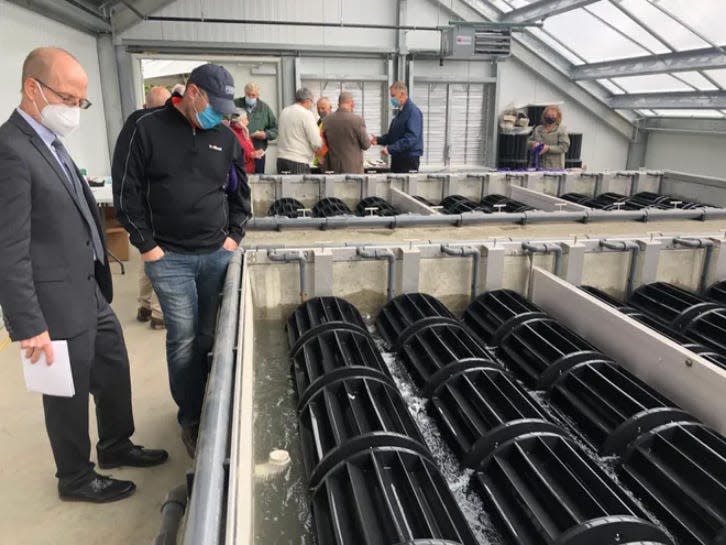
Where has this been done before?
In addition to several U.S. states, also including Colorado and Wisconsin, John said they had a presence in Egypt, France, and Mexico.
Naples, New York, Mayor Brian Schenk, appearing over a video call Thursday, described their community’s story with an Algaewheel plant coming online a couple of years ago.
And more importantly, why they needed a wastewater plant.
Schenk said the village of just over 1,000 people had “in excess of 11 empty storefronts only five years ago.” And without the appropriate infrastructure to support growth, they lost opportunities, like a small chocolate manufacturer, a brewery, and several restaurants.
The need economically existed, he said, and though they investigated other kinds of wastewater treatment, they quickly understood the environmental benefit to the proposed plant they now have.
“Your cost benefit with older technology tends to wane over time, and after being introduced to the Algaewheel system by our engineers — Artie saw it and probably saw what I saw — (we learned) it’s green infrastructure, number one. I call it mother nature on steroids," Schenk said. "… Long story short, we have maybe one, two empty storefronts and they’re empty for different reasons other than appropriate infrastructure. We gained 11 new businesses, including restaurants and other types of businesses, in the middle of the pandemic. This is when our infrastructure went online.”
Contact Jackie Smith at (810) 989-6270 or jssmith@gannett.com.
This article originally appeared on Port Huron Times Herald: Biggest takeaways as Clay Township moves ahead with algae-based wastewater plant

